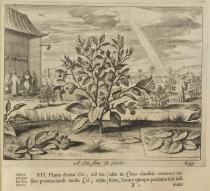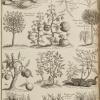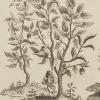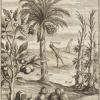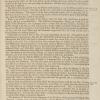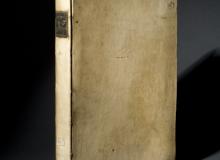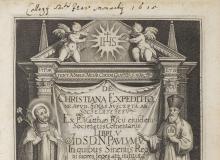Tea
One of the earliest records of tea written by Jesuit missionaries was contained in Giovanni Pietro Maffei's Historiarum Indicarum, libri XVI, published in 1558. Afterwards, Jesuits like Matteo Ricci, Alvaro Semedo, Martino Martini, Louis Le Comte and Jean-Baptiste Du Halde also recorded descriptions about tea. As with other items of flora and fauna they included in their descriptive works – such things as silk, rhubarb and ginseng – they not only discussed the physical attributes of the plant, but also the manner in which it was cultivated and used.
Matteo Ricci was greatly struck by the uses made of the leaves from the tea bush and thus described it at length, using one of the Chinese words for what we now call tea in English. The following is a translation of some of Ricci’s text
We must, of necessity, forgo the discussion of many things such as variegated marbles, bronzes, precious stones, gems, various coloring materials for paints, scented woods, bitumens, and numerous other things adhering to civilization and culture. However two or three things are entirely unknown to Europeans of which I must give a brief account. First, there is a certain bush from the leaves of which is concocted that celebrated drink, known to the Chinese, the Japanese, and to their neighbours as cia.
…
Indeed it might be that this same plant can be found in our own fields. Here they gather its leaves in the springtime and place them in a shady place to dry, and form the dried leaves they brew a drink which they use at meals and which is served to friends when they come to visit. On such occasions it is served continually as long as they remain together engaged in conversation. This beverage is sipped rather than drunk and it is always taken hot. It is not unpleasant to the taste, being somewhat bitter, and it is usually considered to be wholesome even if taken frequently.
[The translation is from Louis Gallagher’s China in the sixteenth century: the journals of Matteo Ricci, 1583-1610 (New York: Random House, 1953), pp.16-17.]
